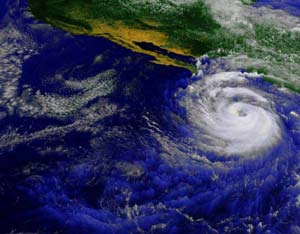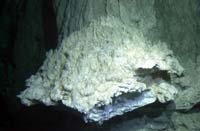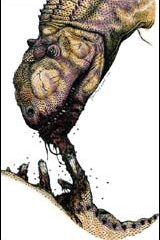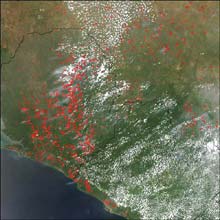Earth Sciences
Earth Sciences (also referred to as Geosciences), which deals with basic issues surrounding our planet, plays a vital role in the area of energy and raw materials supply.
Earth Sciences comprises subjects such as geology, geography, geological informatics, paleontology, mineralogy, petrography, crystallography, geophysics, geodesy, glaciology, cartography, photogrammetry, meteorology and seismology, early-warning systems, earthquake research and polar research.

UCSB professor says volcanic eruptions in Costa Rica ’inevitable’
It might be 500,000 years or five years, but the Central Valley of Costa Rica will definitely experience major volcanic activity again, according to Phillip B. Gans, professor of geology at the University of California, Santa Barbara. He presented a study of volcanic rocks of Costa Rica in his recent talk at the annual meeting of the Geological Society of America.
“The Costa Ricans were not around for the last big one, but it’s inevitable,” said Gans. “Another pyroclastic flow like the

Hurricane Winds Carried Ocean Salt & Plankton Far Inland
Researchers found surprising evidence of sea salt and frozen plankton in high, cold, cirrus clouds, the remnants of Hurricane Nora, over the U.S. plains states. Although the 1997 hurricane was a strong eastern Pacific storm, her high ice-crystal clouds extended many miles inland, carrying ocean phenomena deep into the U.S. heartland.
Kenneth Sassen of the University of Utah, Salt Lake City, and University of Alaska Fairbanks; W. Patrick Arnott of the Desert Research Institute (DRI) in Reno,

Scientists returning to field of eerie thermal spires
The bizarre hydrothermal vent field discovered a little more than two years ago surprised scientists not only with vents that are the tallest ever seen – the one that’s 18 stories dwarfs most vents at other sites by at least 100 feet – but also because the fluids forming these vents are heated by seawater reacting with million-year-old mantle rocks, not by young volcanism.
The remarkable Lost City hydrothermal vent field, so named partly because it sits on a seafloor mountain named the

Mini-Monsoon In The Mediterranean – Science article on the climate puzzle in the Near East
Our post-ice-age climate is not nearly as stable as is commonly believed. New evidence for this is reported by geoscientists of the DFG Research Center Ocean Margins in the upcoming issue of the journal Science. Investigating marine sediments from the northern Red Sea, they discovered that this currently very dry region was influenced by a long wet period between 9,000 and 6,500 years ago. It was characterized by a monsoon-like system during that time. The possibility that this Mediterranean monsoon

Dinosaur Cannibal Unearthed in Madagascar
The exotic island of Madagascar, situated off the southeast coast of Africa, was a dangerous place to live 65 million to 70 million years ago. Crocodiles swarmed in the rivers, and a 30-foot-long, meat-eating dinosaur named Majungatholus atopus stalked the plains. Like most carnivorous dinosaurs, Majungatholus had teeth perfectly suited for ripping into flesh. But what was on the menu? Until now, this question has remained a mystery. In a report published in the April 3 issue of the Journal

NASA ties El Niño induced drought to record air pollution from fires
Scientists using NASA satellite data have found the most intense global pollution from fires occurred during droughts caused by El Niño. The most intense fires took place in 1997-1998 in association with the strongest El Niño event of the 20th century.
Bryan Duncan, Randall Martin, Amanda Staudt, Rosemarie Yevich and Jennifer Logan, from Harvard University, used data observed by NASA’s Total Ozone Mapping Spectrometer (TOMS) satellite to quantify the amount of smoke pollution from biomass b